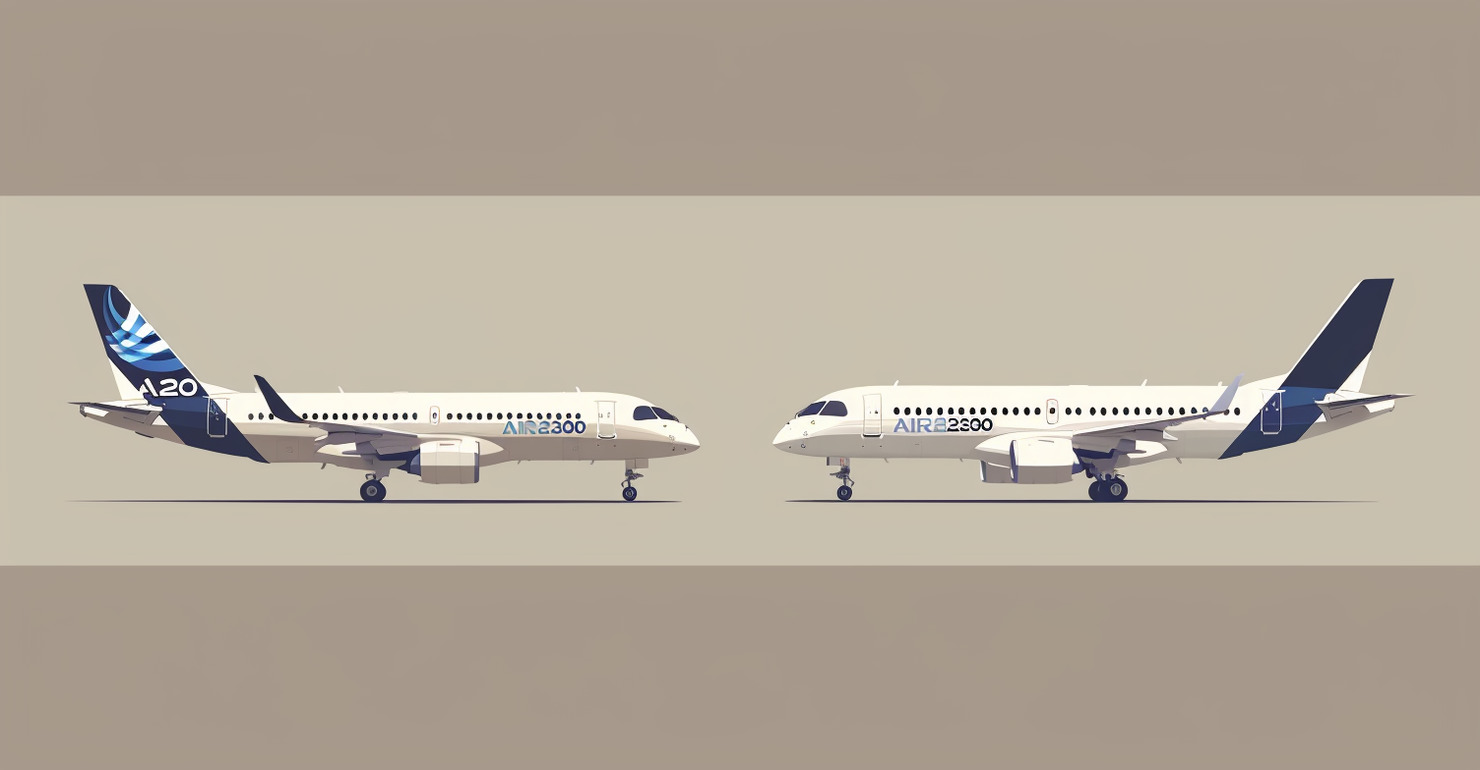
The Impact of Climate Change on Aviation Weather Patterns
The impact of climate change on aviation weather patterns is a growing concern in the aviation industry. With the increasing frequency of extreme weather events such as storms, hurricanes, and heatwaves, the aviation sector is facing significant challenges. Changes in temperature, precipitation, storm patterns, sea level rise, and wind patterns are all expected to affect aircraft performance, demand patterns, and infrastructure. Despite these challenges, a survey found that a significant number of aviation industry respondents have not yet begun planning for adapting to these impacts. It is crucial for the industry to consider the implications of climate change and take proactive measures to mitigate its effects.
Historical Data and IPCC Scenarios
Historical data and IPCC (Intergovernmental Panel on Climate Change) scenarios provide valuable insights into the impact of climate change on aviation weather patterns. It is widely acknowledged that anthropogenic global warming is driving significant changes in climate, including weather patterns over several decades.
The IPCC has documented the historical climate change data, particularly in the satellite era from the late 1970s. This data highlights the increasing frequency of extreme weather events, such as storms, hurricanes, and heatwaves.
The effects of climate change on aviation are expected to manifest through various factors, including temperature fluctuations, changing precipitation patterns, storm patterns, sea-level rise, and altering wind patterns. These changes have the potential to reduce aircraft performance, shift demand patterns, and pose risks to infrastructure.
Despite the scientific consensus on the implications of climate change on aviation, a survey found that a significant number of European aviation industry respondents have yet to commence planning for adapting to these impacts.
Considering the projected scenarios and historical data, it is imperative for the aviation industry to recognize and address the challenges posed by climate change. By taking proactive measures, such as incorporating climate adaptation strategies, investing in resilient infrastructure, and enhancing operational preparedness, the industry can mitigate the adverse effects and ensure long-term sustainability.
Changes in Temperature and Precipitation
The impact of climate change on aviation weather patterns is evident through the changes in temperature and precipitation. Rising global temperatures directly affect aircraft performance and operations. Higher temperatures result in decreased lift capacity, reduced engine efficiency, and increased fuel consumption, affecting the overall flight efficiency.
Moreover, changes in precipitation patterns pose significant challenges for aviation. Increased rainfall intensity can lead to flooding and reduced visibility, impacting airport operations and causing flight delays or cancellations. On the other hand, changing precipitation patterns may also result in prolonged droughts and reduced water availability, impacting airport infrastructure and water management systems.
The Intergovernmental Panel on Climate Change (IPCC) projects that extreme weather events, including heavy rainfall and heatwaves, will become more frequent and intense due to climate change. These changes further contribute to uncertainties in aviation operations and require adaptation measures.
To address these changing conditions, airports and airlines need to invest in infrastructure upgrades, such as improved drainage systems and advanced weather monitoring technologies. Additionally, enhanced forecasting capabilities and real-time weather information can help mitigate the impact of temperature and precipitation changes on flight operations and ensure passenger safety.
Storm Patterns and Extreme Weather Events

Storm patterns and extreme weather events are among the prominent impacts of climate change on aviation weather patterns. As global weather patterns change in response to climate change, adverse and significant weather events are becoming more frequent and intense.
These extreme weather events, including storms, hurricanes, and heatwaves, pose significant challenges to the aviation industry. They can disrupt airport operations, cause flight delays and cancellations, and potentially compromise passenger safety. The increasing occurrence of severe storms and their intensification can also impact aircraft performance and operational efficiency.
Furthermore, changing weather patterns contribute to the formation of turbulence, which presents hazards to both flight safety and passenger comfort. Turbulence caused by convective storms, wind shear, and other atmospheric disturbances can lead to unexpected jolts and bumps during flights.
To mitigate the risks associated with storm patterns and extreme weather events, airlines and airports need to invest in advanced weather monitoring systems, improve forecasting capabilities, and enhance communication channels to provide real-time updates to pilots and air traffic controllers. Additionally, implementing stringent safety protocols and procedures can help mitigate the potential impacts of these weather events on flight operations.
Sea Level Rise and Coastal Airports
Sea level rise is a significant concern for coastal airports in the context of climate change. Due to global warming, the Earth’s polar ice caps and glaciers are melting, leading to an increase in the volume of water in the oceans. This rise in sea levels poses a threat to low-lying coastal areas, including airports located near coastlines.
The Intergovernmental Panel on Climate Change (IPCC) projects a global sea-level rise of 52-98 cm by 2100 if greenhouse gas emissions continue to grow. Coastal airports, which are vulnerable to storm surges, face the risk of increased flooding and damage to infrastructure.
A study conducted by EUROCONTROL identified that approximately 178 coastal and low-lying airports could potentially be affected by sea-level rise. The closure of an airport even for one day due to flooding can result in substantial costs, including diverted and cancelled flights.
To adapt to these challenges, airports need to implement measures such as constructing seawalls, elevating runways and infrastructure, and improving drainage systems. Additionally, implementing comprehensive emergency response plans and evacuation procedures can help mitigate the impact of rising sea levels on airport operations and ensure the safety of passengers and staff.
Addressing the risks associated with sea-level rise requires collaboration between stakeholders, including airport authorities, government agencies, and researchers. By prioritizing resilience and incorporating climate change adaptation strategies into their long-term planning, coastal airports can continue to operate efficiently in the face of sea-level rise and protect against potential damage caused by extreme weather events.
Turbulence and Changing Wind Patterns
The impact of climate change on aviation weather patterns also includes the effects on turbulence and changing wind patterns. Turbulence, caused by atmospheric disturbances like storms, is a significant concern for airlines and passengers as it can affect flight safety and passenger comfort.
With climate change, the frequency and intensity of turbulence are projected to increase. Changing wind patterns contribute to the formation and movement of turbulence, making it more challenging for pilots to navigate through turbulent areas.
The shifting wind patterns can also have implications for flight routes and durations. While tailwinds can shorten flight times and improve fuel efficiency, headwinds can prolong flights and increase fuel consumption. These changes in wind patterns require careful flight planning and adjustment of routes to optimize flight operations.
To mitigate the impacts of turbulence and changing wind patterns, airlines invest in advanced weather monitoring systems and technologies that provide real-time turbulence forecasts to pilots. This enables them to make informed decisions and take necessary precautions to ensure the safety and comfort of passengers and crew.
Furthermore, ongoing research and development efforts aim to enhance predictive models and forecasting capabilities related to turbulence and wind patterns. These advancements help airlines better anticipate and adapt to the evolving aviation weather conditions caused by climate change.
Implications for Airline Operations

The implications of climate change on aviation weather patterns have significant repercussions for airline operations. The increasing frequency and intensity of extreme weather events, such as storms, heatwaves, and heavy rainfall, can disrupt flight schedules and cause delays or cancellations. Adverse weather conditions pose safety risks and can impact aircraft performance.
Changes in temperature, precipitation patterns, and wind can affect flight planning, fuel consumption, and routing decisions. Airlines must constantly monitor and adapt to evolving weather conditions to ensure the safety and efficiency of their operations.
Moreover, shifting weather patterns can also lead to changes in customer demand. Passengers may alter their travel plans based on anticipated weather disruptions or choose destinations with more favorable weather conditions. Airlines need to be prepared to accommodate changing demand and provide flexibility to passengers affected by weather-related disruptions.
To mitigate the impact of climate change on airline operations, proactive measures are necessary. This includes investing in advanced weather forecasting technologies, improving communication channels between air traffic control and pilots, and implementing robust contingency plans for weather-related disruptions.
Furthermore, collaboration between airlines, airport authorities, and meteorological agencies is essential for sharing real-time weather data and information. By working together, stakeholders can develop coordinated strategies to minimize the impact of weather disruptions on airline operations and enhance overall resilience in the face of changing weather patterns.
Infrastructure Upgrades and Adaptation Measures
The impact of climate change on aviation weather patterns necessitates the implementation of infrastructure upgrades and adaptation measures. As extreme weather events become more frequent and intense, airports and airlines must take proactive steps to enhance their resilience and ensure safe operations.
Infrastructure upgrades are essential to withstand the challenges posed by climate change. This may include improvements in runway design and construction to account for changing precipitation patterns, sea level rise, and increased storm surges. Upgrading drainage systems and implementing flood protection measures can help mitigate the risks of airport flooding and infrastructure damage.
Adaptation measures are also crucial to address the evolving aviation weather patterns. This can involve implementing advanced weather monitoring systems to enhance forecasting capabilities and provide real-time information to pilots and air traffic controllers. Developing robust emergency response plans and evacuation procedures can help ensure the safety of passengers and staff during extreme weather events.
Collaboration among industry stakeholders, including airport authorities, airlines, meteorological agencies, and policymakers, is paramount in developing and implementing effective adaptation strategies. Sharing best practices, data, and experiences can foster innovation and strengthen the industry’s collective response to the impacts of climate change on aviation weather patterns.
Furthermore, investing in research and development to advance technologies such as improved turbulence detection systems and sustainable aviation fuels can contribute to long-term climate mitigation efforts and reduce the environmental impact of air travel.
By prioritizing infrastructure upgrades, implementing robust adaptation measures, and fostering collaboration, the aviation industry can navigate the challenges posed by climate change and ensure the continued safe and efficient operation of air transport systems.
Policy and Regulatory Considerations
The impact of climate change on aviation weather patterns necessitates strong policy and regulatory considerations to address the challenges and ensure a sustainable future for the industry.
International bodies, such as the International Civil Aviation Organization (ICAO), play a crucial role in developing policies and regulations to mitigate the environmental impact of air travel. Initiatives like the Carbon Offsetting and Reduction Scheme for International Aviation (CORSIA) aim to limit and offset aviation emissions to mitigate climate change effects.
National governments also have a vital role in implementing policies and regulations that support climate resilience and adaptation in aviation. This includes setting emission reduction targets, promoting sustainable aviation fuels, and establishing guidelines for airport infrastructure upgrades to withstand climate impacts.
Collaboration between governments, industry stakeholders, and scientific organizations is essential to develop comprehensive policies that address the specific challenges posed by climate change on aviation weather patterns. By aligning efforts and sharing best practices, the industry can work towards a more sustainable and resilient future.
Furthermore, investment in research and development is critical to driving innovation and finding solutions to minimize the aviation sector’s environmental impact. This includes exploring alternative propulsion technologies, improving aircraft design for efficiency, and enhancing weather forecasting models to better predict and respond to changing climate patterns.
Ultimately, a combination of effective policies, stringent regulations, technological advancements, and collaborative efforts will be necessary to mitigate the impact of climate change on aviation weather patterns and ensure the long-term sustainability of the industry.
Conclusion
The impact of climate change on aviation weather patterns is a pressing concern for the industry. The changing temperature, precipitation, storm patterns, sea level rise, turbulence, and wind patterns all have significant implications for airline operations, aircraft performance, flight planning, and passenger safety.
To address these challenges, it is crucial that airports, airlines, regulators, and policymakers collaborate to implement infrastructure upgrades, adaptation measures, and robust policies. Enhancing airport resilience through improved drainage systems, elevated runways, and advanced weather monitoring technologies is essential to withstand the effects of extreme weather events.
Additionally, investing in research and development to enhance forecasting capabilities, turbulence detection systems, and sustainable aviation fuels can contribute to mitigating the environmental impacts of air travel and improving overall operational efficiency.
Policy and regulatory considerations play a vital role in driving sustainable practices within the aviation industry. Governments and international organizations need to implement measures that promote emission reductions, incentivize the adoption of green technologies, and establish guidelines for climate resilience in airport infrastructure development.
By taking proactive measures, considering long-term planning, and prioritizing sustainability, the aviation industry can navigate the challenges posed by climate change on weather patterns. With collaboration and innovation, the industry can work towards a more resilient and sustainable future for aviation operations.



